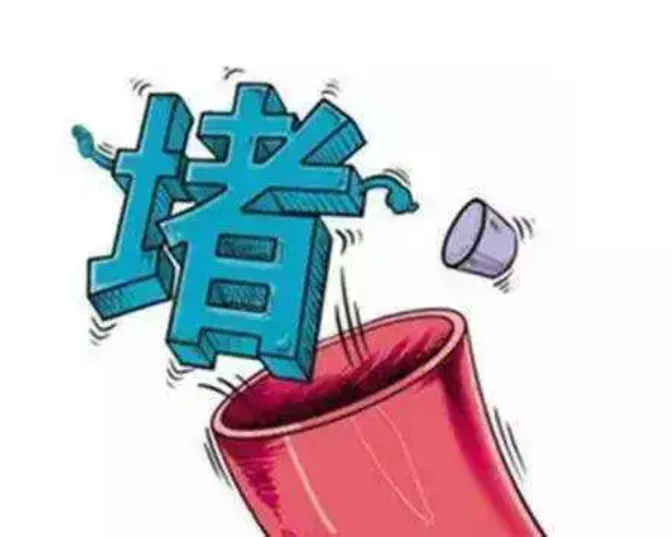Qi Stagnation
Qi stagnation primarily results from emotional distress, phlegm, dampness, food accumulation, and blood stasis, which obstruct the flow of Qi, leading to local or systemic Qi stagnation and dysfunction of certain organs and meridians.
When we feel emotionally unwell and cannot express it, we often feel a sense of Qi being “blocked.” We may sigh or take deep breaths to relieve this feeling, which is a manifestation of Qi stagnation. In Traditional Chinese Medicine (TCM), this is referred to as Qi stagnation syndrome, indicating pathological changes due to the impaired flow of Qi in the body. Qi stagnation syndrome is classified as a condition of excess.

Since the Liver governs the smooth flow of Qi, regulating its movement; the Lungs govern the dispersal and descending of Qi, controlling the Qi of the entire body; and the Spleen raises and descends Qi, acting as a pivot for Qi movement, it is common to see Qi stagnation in the Liver, Lungs, and Spleen-Stomach in clinical practice. Qi stagnation in a specific area can lead to distension, pain, and even the production of pathological products such as blood stasis and phlegm. The common pathological manifestations of Qi stagnation in various locations include discomfort, distension, and pain.
Pathology
The formation of a Qi stagnation and blood stasis constitution is a lengthy process influenced by various factors such as emotions, diet, age, environment, and disease.
(1) Emotional depression, tension, introverted personality, and unresolved grievances can lead to long-term Qi and blood circulation issues.
(2) A diet high in greasy and sweet foods, elevated blood lipids, excessive salt intake, or insufficient water consumption can cause blood to become overly viscous, leading to impaired Qi and blood flow.
(3) Qi deficiency and Yang deficiency can reduce the driving function, resulting in sluggish Qi and blood circulation or accumulation.
(4) A cold living environment can cause long-term vascular spasms, leading to slow or stagnant blood flow in microvessels.
(5) Lack of exercise can weaken myocardial contractility, resulting in sluggish Qi and blood circulation.
(6) Recent studies have found that various chronic inflammations can cause local tissue congestion, edema, adhesions, or the accumulation of pathological products, affecting Qi and blood circulation.
Predisposition to Disease
The predisposition to a Qi stagnation and blood stasis constitution often exhibits significant characteristics of “obstruction“. For example: stubborn headaches, depression, cerebral infarction, myocardial infarction, cholecystitis, intestinal dysfunction, lobular hyperplasia of the breast, dysmenorrhea, uterine fibroids, malignant tumors, etc.
The concept of “Qi stagnation and blood stasis lead to myriad diseases” is grounded in practice. Medical research has confirmed that microcirculation obstruction is the underlying cause of many diseases and one of the reasons chronic diseases remain unresolved, hence the saying “long-term illness inevitably leads to stasis“.
Clinical Manifestations
The main symptoms include local or systemic distension, fullness, and pain, with symptoms varying in intensity and location, often exacerbated by negative emotions and alleviated by positive feelings, warmth, sighing, or deep breaths. The pulse is often wiry, and there may be no significant changes in the tongue.
Syndrome Analysis
Qi stagnation leads to pain due to obstruction; thus, Qi stagnation primarily manifests as distension, fullness, and pain, with symptoms that can vary in location. When belching, sighing, or emotional release occurs, Qi may temporarily flow, alleviating symptoms; however, when emotions are repressed, Qi stagnation worsens, leading to exacerbation of symptoms. Qi stagnation in different organs and meridians presents with varying clinical manifestations. For instance, Qi stagnation in the eyes leads to headaches; Qi stagnation in the upper jiao causes chest tightness, frequent sighing, and cough; Qi stagnation in the middle jiao results in abdominal distension and pain, with a drum-like sound upon percussion, belching, and flatulence; Qi stagnation in the lower jiao leads to lower abdominal pain, difficulty with urination, or conditions like hernia and dysmenorrhea; Qi stagnation in the meridians causes distension and pain along the meridian pathways; Qi stagnation in the skin results in swelling.
 ENDPrevious ReviewsBREAK AWAY
ENDPrevious ReviewsBREAK AWAY
Understanding Disease through Sweat in TCM | How to Identify 12 Types of “Sweat” in TCM
TCM Constitution | How to Correctly Identify Your Constitution (Part 1)TCM Constitution | How to Correctly Identify Your Constitution (Part 2)
Five Color Recognition Method in TCM: Diagnosing Illness through Facial Color

